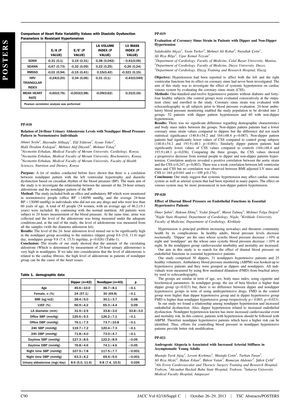Relation of 24-Hour Urinary Aldosterone Levels with Nondipper Blood Pressure Pattern in Normotensive Individuals
October 2013
in “
Journal of the American College of Cardiology
”

TLDR Higher aldosterone levels in urine are linked to a nondipper blood pressure pattern in healthy people.
The study investigated the relationship between 24-hour urinary aldosterone levels and the nondipper blood pressure pattern in normotensive individuals. A total of 85 normotensive participants (office BP <140/90 mmHg, and average 24-hour BP <130/80 mmHg), who were not on any medication and under 60 years of age, were included. The study found that the level of 24-hour urinary aldosterone was significantly higher in the nondipper group compared to the dipper group (9.8 (7.4, 15.5) mgr/day vs. 8.6 (5.0, 11.6) mgr/day, p=0.026). The conclusion drawn from these results was that higher circulating aldosterone levels, as determined by 24-hour urinary aldosterone measurement, are associated with the nondipper blood pressure pattern. This could potentially be a cause of cardiac issues, considering the relationship between aldosterone levels and cardiac fibrosis.




